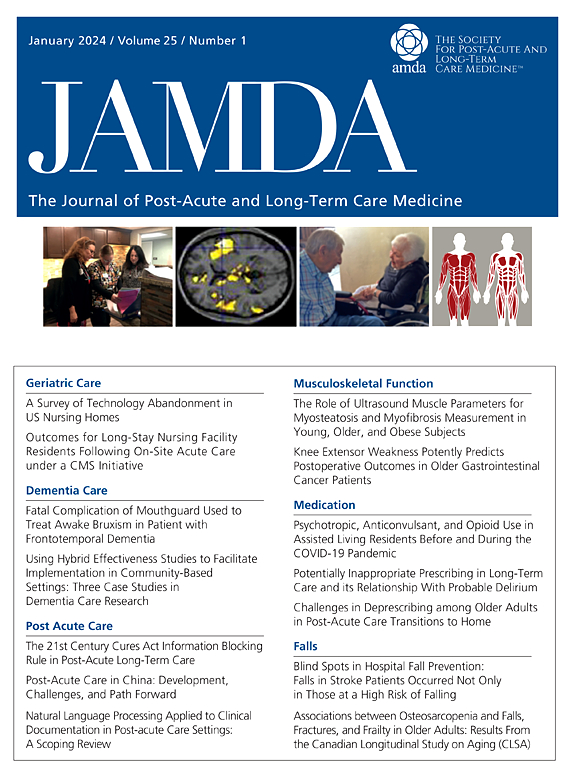Cognition Assessment with ICOPE-Monitor: Identifying Candidates for Novel Therapies
IF 4.2
2区 医学
Q2 GERIATRICS & GERONTOLOGY
Journal of the American Medical Directors Association
Pub Date : 2025-02-10
DOI:10.1016/j.jamda.2024.105483
引用次数: 0
Abstract
Objective
To describe the clinical performance of the cognition battery on Step 1 (CogStep1) as a screening tool to detect (1) individuals with objective cognitive impairment regardless of their Mini-Mental State Exam (MMSE) score, and specifically (2) to identify patients who could potentially benefit from anti-amyloid treatments. It was hypothesized that CogStep1 was sensitive enough to identify individuals with mild stages of cognitive deterioration compared with a comprehensive neuropsychological and clinical evaluation.
Design
Cross-sectional study.
Setting and Participants
Patients aged 60 and older referred to the Toulouse Memory Clinic.
Methods
Participants underwent a comprehensive neuropsychological and clinical evaluation and were also screened with the integrated care in older people (ICOPE)-monitor Step 1 by trained health professionals a maximum of 6 months before their memory consultation. Objective cognitive impairment was defined as mild cognitive impairment (MCI) or dementia, according to National Institute on Aging and the Alzheimer's Association criteria. A positive CogStep1 screening was considered if people had at least 1 mistake in the 3-word recall or the time orientation (weekday, month, year). Sensitivity, specificity, area under the receiver operating characteristic curve (AUROC), positive predictive value (PPV), and negative predictive value (NPV) were estimated.
Results
Among the 352 participants [54.8% women, mean age 76.5 (SD 6.7)], 78.1% had a positive screening for CogStep1, and 75.6% had objective cognitive impairment. The clinimetric properties of CogStep1 to detect objective cognitive impairment (vs those without) were sensitivity = 87.0 (95% CI, 82.3–90.8), specificity = 48.8 (95% CI, 37.9–59.9), AUROC = 0.68 (95% CI, 0.62–0.74), PPV = 83.8 (95% CI, 78.8–87.9), and NPV = 55.3 (95% CI, 43.4–66.7). We found similar values among individuals with MCI or mild dementia who could be potential users of new anti-amyloid drugs (MMSE score ≥ 20 or 22).
Conclusion and Implications
CogStep1 demonstrated good sensitivity and PPV to identify objective cognitive impairment among older people referred to a memory clinic. Achieving excellent sensitivity and specificity values is challenging for a very short test. However, CogStep1 proved useful for risk-stratifying patients who can benefit from further cognitive assessment, biomarker measurements, and therapeutic management, especially in the context of new anti-amyloid therapies.
求助全文
约1分钟内获得全文
求助全文
来源期刊
CiteScore
11.10
自引率
6.60%
发文量
472
审稿时长
44 days
期刊介绍:
JAMDA, the official journal of AMDA - The Society for Post-Acute and Long-Term Care Medicine, is a leading peer-reviewed publication that offers practical information and research geared towards healthcare professionals in the post-acute and long-term care fields. It is also a valuable resource for policy-makers, organizational leaders, educators, and advocates.
The journal provides essential information for various healthcare professionals such as medical directors, attending physicians, nurses, consultant pharmacists, geriatric psychiatrists, nurse practitioners, physician assistants, physical and occupational therapists, social workers, and others involved in providing, overseeing, and promoting quality

 求助内容:
求助内容: 应助结果提醒方式:
应助结果提醒方式:


